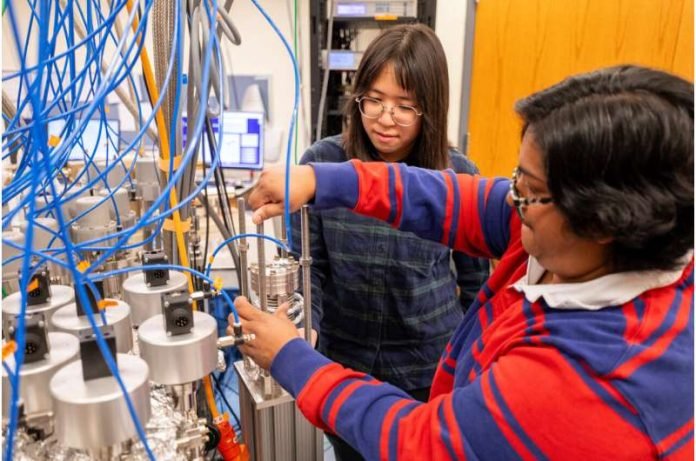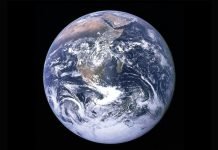
Rita Parai, an assistant professor at Washington University in St. Louis, along with her graduate student, Judy Zhang, have unlocked ancient Earth secrets through the study of noble gases trapped in volcanic rocks.
Their work, recently published in Earth and Planetary Science Letters, takes a deep dive into the past, revealing that the Earth’s plate tectonics have been recycling gases from the planet’s surface to its depths for over 2.5 billion years.
Noble gases, due to their chemical inertness, act as time capsules from the Earth’s formation around 4.5 billion years ago. Their presence and specific isotopic signatures in rocks provide valuable clues about our planet’s evolutionary history.
In particular, the team focused on xenon, a rare noble gas, in volcanic rocks from the Cook and Austral islands. These rocks, originating deep within the Earth’s mantle, reached the surface through volcanic eruptions, carrying with them the story of ancient subduction processes.
Subduction is the process by which tectonic plates sink into the mantle from the surface. The findings challenge previous theories that the early Earth was much hotter than today, suggesting instead that subduction occurred under conditions not dissimilar to the present.
This conclusion comes from the observation that the rocks retained their xenon content; high temperatures would have stripped them of their gases.
Detecting xenon in these rocks is an extraordinarily delicate task, given its scarcity. Parai compares finding xenon to locating a microscopic needle in a vast hayfield, with only about 100,000 xenon atoms for every gram of material.
To capture these elusive gases, the team had to process large quantities of the mineral olivine, a component of the volcanic rocks.
The endeavor to understand Earth’s deep history doesn’t stop with this study. Last December, Zhang collected additional rock samples from the ocean floor during a research cruise in the South Pacific.
The analysis of these samples in Parai’s laboratory promises to further illuminate the mysteries of our planet’s ancient past.
Through their meticulous and groundbreaking work, Parai, Zhang, and their colleagues continue to push the boundaries of what we know about Earth’s formative processes, shedding light on the complex interactions between the planet’s surface and its innermost depths.
The research findings can be found in Earth and Planetary Science Letters.
Copyright © 2024 Knowridge Science Report. All rights reserved.




